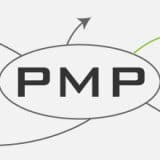Project Benefit Analysis Concepts for the PMP Exam (Part 2)

This is the second part of the Project Benefit Analysis Concepts for the PMP Exam. The first 3 metrics / accounting terms are discussed in part 1. In this article, we will concentrate on the remaining five metrics / accounting terms:
- Payback Period
- Return on Investment (ROI)
- Opportunity cost
- Net Present Value
- Benefit-Cost Ratio (BCR)
- Internal Rate of Return (IRR)
- Depreciation
- Sunk Cost
Article Highlights
Net Present Value (NPV)
Net Present Value (NPV) of the sum of all cash inflows (in Present Value) of the project minus the initial cost, i.e. PV (benefits) – PV (costs)
The formula for Net Present Value formula is:
Net Present Value (NPV) = Σ (Pi / (1+ r) n) – Ci
where Pi is cash inflow; r is interest rate; n is time periods; Ci is initial cost.
Let’s introduce the concept of Present Value (PV) first. Since there are inflation/deflation, $1000 now does not have the same purchasing power as $1000 in four years (i.e. owing to inflation, you can buy less with $1000 four years later). In order to adjust for inflation/deflation, Present Value (PV) is introduced. Present Value (PV) is the future value in terms of today’s money with adjustment for inflation. This would provide an accurate figure to be used in benefit comparison.
Don’t worry, for the PMP Exam, candidates are not required to calculate the present value or net present value. You will only need to know that:
- NPV is an effective tool to help determining whether a project will be profitable or not;
- NPV > 0 — the project is profitable
- NPV = 0 — the project will break even
- NPV < 0 — the project will lose money
The following would be a mock exam question on net present value:
- For the facility expansion project, $100,000 would be needed which is expected to generate a total of $200,000 (in present value) over 5 years. What is the Net Present Value (NPV) of the project?
A. $100,000
B. $200,000
C. $300,000
D. -$100,000
Since the Net Present Value (NPV) is the present value of all benefits minus all costs, i.e. NPV = $200,000 – $100,000 = $100,000.
Generally speaking,
The larger the Net Present Value (NPV), the more profitable the project is to the organization.
Benefit-Cost Ratio (BCR)
Benefit-Cost ratio is the ratio of the benefits of a project as compared to the costs calculated in terms of Present Value (PV).
As pointed out in the Net Present Value (NPV) section, the use of PV will allow the figures to be calculated more accurately with adjustments for inflation.
using the Net Present Value in calculating the BCR is inflation.
The formula for calculating Benefit-Cost Ratio (BCR) is:
Benefit-Cost Ratio (BCR) = Benefits (in terms of PV) / Costs (in terms of PV)
where benefits are the total value/revenue generated (without consideration for costs). Interpretation of Benefit-Cost Ratio (BCR) :
- BCR > 1 — the project is profitable, and the higher the BCR the better
- BCR = 1 — the project will break even
- BCR < 1 — the project will cause the organization to lose money and is generally considered as not a good investment
The following would be a sample exam question on benefit-cost ratio:
- You are considering a project for the expansion of facilities to increase production owing to rising demands. The cost for the expansion work and equipment would be $1,000,000 (NPV). It is expected that an increase in revenue of $2,000,000 (NPV) would be realized with the expansion. What is the Benefit-Cost Ratio (BCR) of the project?
A. 0.5
B. 20
C. 2
D. Not enough information to calculation
Benefits = $2,000,000 and Costs = $1,000,000. Since BCR = Benefits / Costs = $2,000,000 / $1,000,000 = 2. NOTE: in the PMP Exam, you will NOT be required to calculate the BCR.
Generally speaking,
The larger the Benefit-Cost Ratio (BCR), the more favourable the project is financially to the organization.
Internal rate of return (IRR)
Internal rate of return (IRR) is the interest rate at which the cash inflow and cash outflow of the project equals zero.
And the formula for Internal rate of return (IRR) is:
0 = F0 + F1/(1+IRR) + F2/(1+IRR)2 + F3/(1+IRR)3 + . . . +Fn/(1+IRR)n
where N is number of periods; F is cash flow.
The formula looks sooooooooooooo difficult. The good news here is that you will NOT be asked to calculate the internal rate of return (IRR) in the PMP Exam. The only thing you need to know about Internal Rate of Return is that, the higher the IRR, the better.
The following would be a mock exam question on internal rate of return:
- There are three projects for the organization to choose from: Project A has an internal rate of return of 10%, Project B 20% while Project B -20%. Based on the information provided, which is the best project?
A. Project A
B. Project B
C. Project D
D. Not enough information provided
Project B has the largest internal rate of return, therefore it is deemed most profitable.
Generally speaking,
The larger the Internal Rate of Return (IRR), the more favourable the project is financially to the organization.
Depreciation
Depreciation is the decrease in value of assets over time.
The decrease in value can be attributed to many factors, take production machines as an example, the depreciation may be due to loss of efficiency, becoming out of date, new model coming out, etc.
There are three type of depreciation calculation techniques:
- Straight Line Depreciation — the same amount is reduced in value over each year (the simplest depreciation calculation method).
- Double-declining Balance — (accelerated depreciation) reduction in value is higher at first and lower later on (twice that for straight line depreciation in the first year with 40% less than the previous year later on).
- Sum of Year Depreciation — (accelerated depreciation) greater depreciation in the earlier years of an asset’s useful life and less in the later years (e.g. for a machine with 5 years of service life, the sum of digit years = 1 + 2 + 3 + 4 + 5 = 15 and the depreciation for the first year is 5 / 15, the second year is 4 / 15 and so on).
Remember this,
Assets for a project will reduce in its value over time (depreciation).
Sunk Cost
Sunk Cost is the cost that has already been spent which cannot be recovered.
The emphasis here is sunk cost is not recoverable. For example, if the organization has spent $100,000 on installation of a software on all workstations in preparation for an expected change in technology, the $100,000 spent is the sunk cost. This cost cannot be recovered even though the organization later changed its mind to use another software package.
For the PMP Exam, candidates should understand that sunk cost should NOT influence future decisions.
Take the software installation example further, suppose a new software package has come to market which is much much more suited to the organization needs, the management should decide whether to continue with the staff training and documentation ($100,000) of the originally installed software package or opted for the new software ($200,000 including training and documentation). The decision should now be made based solely on which software package is the best for the current moment and disregard the $100,000 spent on the original software package (i.e. the sunk cost).
In addition to sunk cost, there are also other costs which may appear in the exam:
- Fixed Cost — take the software installation as an example, the fixed cost would be the monthly maintenance fee for buy fixes and upgrades
- Variable Cost — that would be the electricity bill used to power the workstations as this would be different each month depending on actual usage
- Direct Costs — expenses that are billed to the project directly, e.g. wages, material cost, etc.
- Indirect Costs — costs that are shared among several projects, e.g. taxes, fringe benefits, PMO, etc.
The following would be a mock exam question on sunk cost:
- In a project, the organization has purchases a machine for $100,000 which was later found to be not suitable. What is the $100,000 termed as?
A. Fixed Cost
B. Sunk Cost
C. Indirect Cost
D. Opportunity Cost
The $100,000 has already been spent which is not recoverable, so it is sunk cost. Note: The cost can also be termed as “direct cost” as the machine is purchased with the sole purpose for the project, but this is not one of the choices for the question.
Remember,
Do not let sunk costs to affect decisions as sunk costs are costs that are not recoverable. Focus on choosing the most feasible and beneficial action as the next step.
Most Popular PMP Certification Exam Articles
- My Exam Prep Tips and Free Resources (I got 4P and 1 MP)
- How to Get 35 Contact Hours Fast and Easy?
- Detailed Comparision of online PMP Courses
- Over 1000+ FREE Quality Mock Exam / Practice Questions
- A FREE Guide to Formulas and Calculation (with explanation and sample questions)
- 47 Commonly Confused Terms with detailed explanation




 Hi, my name is Edward Chung, PMP, PMI-ACP®, ITIL® Foundation. Like most of us, I am a working professional pursuing career advancements through Certifications. As I am having a full-time job and a family with 3 kids, I need to pursue professional certifications in the most effective way (i.e. with the least amount of time). I share my exam tips here in the hope of helping fellow Certification aspirants!
Hi, my name is Edward Chung, PMP, PMI-ACP®, ITIL® Foundation. Like most of us, I am a working professional pursuing career advancements through Certifications. As I am having a full-time job and a family with 3 kids, I need to pursue professional certifications in the most effective way (i.e. with the least amount of time). I share my exam tips here in the hope of helping fellow Certification aspirants!






Your articles are amazing. Thanks for your work.
Great article! Really helped me understand the concepts.
With regards to the Benefit-Cost Ratio (BCR), can the inverse formula Cost-Benefit Ratio (CBR) be also used in the exam?
Actually, the PMP Exam will not ask Aspirants to calculate such ratios/values/etc.. These are included here for a general awareness of the meaning of the terms. If you do not understand them, you can still pass the exam.
Wish you PMP success!